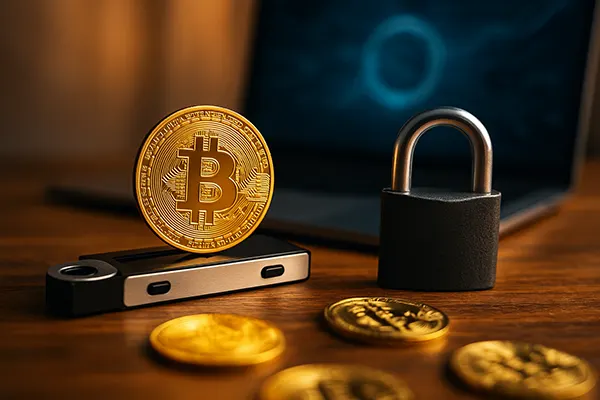
Cryptocurrency Security: How to Protect Your Assets from Scammers in 2025
Cryptocurrency remains one of the most discussed topics in the digital economy. While decentralised assets offer financial freedom and innovation, they also attract cybercriminals who constantly adapt their tactics. In 2025, securing your digital funds is not just a recommendation — it’s an essential responsibility for every crypto user. This article outlines practical, experience-based strategies to defend your assets from scams, theft and fraud in the ever-evolving crypto world.
Understanding the Current Threat Landscape
Cybercrime targeting cryptocurrency has grown increasingly sophisticated. Gone are the days when only phishing emails were a threat. Today, scams include fake wallets, Ponzi schemes, malware-infected browser extensions and deepfake impersonations of well-known crypto influencers. Attackers now exploit AI tools to automate social engineering at scale, making it harder than ever to distinguish real from fake.
Additionally, hackers are focusing on centralised exchanges and DeFi protocols alike, exploiting bugs or misconfigurations to access users’ funds. Even cold wallets are under scrutiny, as supply chain attacks have proven that no solution is entirely foolproof.
With 2025 seeing more mobile-based wallets and custodial services integrated into daily financial operations, it’s critical to stay informed. The increasing popularity of cryptocurrencies has unfortunately gone hand-in-hand with a surge in cyber threats.
Types of Attacks You Need to Watch For
Common scams in 2025 include impersonation fraud, where attackers pose as support representatives of well-known exchanges to trick users into giving access. Deepfakes and voice clones are often used to make these impersonations more convincing.
Another major risk is “dusting attacks” — scammers send tiny amounts of crypto to wallets and track transaction history to deanonymise users. Once personal data is linked to a wallet, it becomes vulnerable to targeted phishing and extortion.
Smart contract exploits also remain a top concern. Vulnerabilities in DeFi protocols can be exploited within minutes of deployment. Rug pulls, where developers abandon a project after collecting funds, continue to affect unsuspecting investors.
Best Practices for Individual Users
First and foremost, use hardware wallets for long-term storage of large sums. Never store recovery phrases digitally or online. Writing them down and storing them in a secure, offline location minimises exposure to online attacks.
Multi-factor authentication (MFA) must be enabled on all services you use — exchanges, wallets, email accounts. Opt for authenticator apps over SMS, which can be hijacked via SIM-swapping. Also, limit the number of services where you use your wallet address publicly to reduce traceability.
Update your devices regularly. This includes operating systems, browser extensions and wallet software. Outdated systems are more likely to have security holes that attackers can exploit.
How to Detect and Avoid Fraudulent Services
Always verify a service’s legitimacy before connecting your wallet or investing. Check the URL twice, read independent reviews and look for open-source audits if it’s a DeFi project. Social media can mislead — scammers often create near-identical profiles to official ones.
Be sceptical of unrealistic returns or claims. If a project offers guaranteed profits or “risk-free” investments, it’s likely fraudulent. Legitimate projects openly discuss risks and do not promise income.
Participate in communities where scams are actively tracked and discussed. Forums like Reddit, GitHub, and dedicated Telegram groups can alert you about new threats quicker than any official source.

Security for Businesses and Investors
Companies working with crypto must take additional steps to secure digital assets. Employing cold storage for the majority of funds, using multisig wallets and keeping hot wallet balances to a minimum are essential operational security measures.
Conduct regular security audits on smart contracts and infrastructure. Penetration testing and bug bounty programmes help identify weaknesses before malicious actors can exploit them.
For investors, due diligence is key. Research the development team, tokenomics, project roadmap and community feedback. Avoid projects that lack transparency or provide vague whitepapers.
Compliance and Legal Protection
As regulation catches up, understanding local laws and tax obligations related to crypto is important. Keeping transaction records can help prove lawful ownership if disputes arise.
Consider using insured custody services for large investments. These services comply with legal standards and offer an additional layer of protection in case of loss or theft.
Finally, adopt internal compliance protocols if you manage assets for others. Having clear, documented procedures for access control and fund management reduces human error and insider threats.
Popular articles
-
 Micro-Payments via Cryptocurrency: How Content and Entertainment Mo...
Micro-Payments via Cryptocurrency: How Content and Entertainment Mo...Micro-payments powered by cryptocurrency have evolved into a practical economic …
-
 Blockchain-game. What do you need to know about them?
Blockchain-game. What do you need to know about them?In the modern gambling market, innovative technologies are being implemented …
